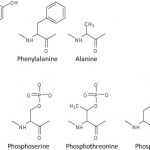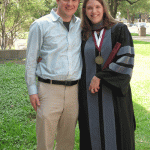Life of Nick
Go to the bottom of the post to see my recommended methods for cooking rice.
This week, I resolved that for the new year I would start blogging more frequently. Given that I really haven't been blogging at all recently, that shouldn't be too hard. I won't bore you with the various reasons why blogging has been so slow recently, but it seems that starting a new job and a new life in a new city has upended my old routines. One activity that I have been focusing much more effort on in my new life, though, is cooking. Spurred in part by reading Ratio by Michael Ruhlman, I've been trying to…
When doing science, there's generally one totally optimal way of performing an experiment. But, there may also be several other less optimal means of gathering similar data, and one of those may be much more feasible than the totally optimal method. As a scientist, you have to determine whether this other method is sufficient, or whether it's necessary to expend the extra effort and/or resources on the more difficult method. Sometimes it's totally fine to take the simpler approach (and this will spare some of your precious time and your lab's precious funding), but this post is about a case…
Just as I was in the process of finishing my doctorate in August, I found out that my first first-author paper had been accepted for publication by The EMBO Journal. This was good news, because we were reporting some pretty fundamental findings in a relatively saturated field, and one of our competitors had managed to successfully stall the acceptance of this paper since March. Up until that point, witnessing this happen firsthand had been a somewhat frustrating and disillusioning experience for a young scientist, but I think that we were vindicated in the end. Anyway, this paper--and another…
As I indicated earlier this summer, the blogging would continue to be a bit slow as I entered the home stretch of grad school. Since then, I'm happy to report that I have submitted my thesis, successfully defended it, resubmitted a corrected version, and had my final thesis accepted. Within the next few weeks, I should receive a letter from Oxford officially conferring my D.Phil. (Oxford's equivalent of the Ph.D.) in biochemistry, and I'll head back to Oxford with my family in late October for graduation. Then, in November, I'll start a postdoc at the NIH.
So, I anticipate that the blogging…
I realize that blogging has been pretty slow here lately. But, I have good reasons, I promise! I spent most of the month of May back in the US for my girlfriend's graduation and then for a cross-country move/Great American Road Trip. Meredith graduated from Texas A&M University College of Veterinary Medicine and Biomedical Sciences on the 14th. Then, after the ensuing festivities, we packed up her truck and headed west to LA, where she's going to be working for the next year as a veterinary intern.
Now that I'm back in Oxford, though, I'm basically in 100% thesis completion mode. The…
Although people who know me can attest that I made countless assurances that I would never do such a thing, I have once again succumbed to the relentless force of progress, and I'm now on Twitter. Check me out. I'm actually finding it quite useful, and I'm currently using my feed to provide updates on new blog posts, to pass along interesting links I won't get around to blogging, to give other random thoughts, and to interact with my online network in general. I've put a widget on the sidebar of my blog, but if you're interested you can also follow my Twitter feed to stay up to date on all…
Cells in higher organisms exist in a dynamic environment, requiring the ability to alternately grasp and disengage from the three-dimensional web of their surroundings. One family of proteins in particular, the integrins, plays a key role in this process by acting as the hands of the cell. Spanning the cell membrane, they link the extracellular matrix to the cell's internal cytoskeleton. Integrins are especially interesting, though, because the cell uses them to uniquely pass signals in both directions across the membrane, and an integrin's adhesiveness for the extracellular matrix can be…
Since my earlier post was my first in over a month and a half, and since blogging was sporadic before then, I suppose I owe my readers an explanation. Basically, it boils down to the fact that like so many of you, I've just been busy. Really busy. For the last several months, I've been incredibly focused on banging out some experiments for a couple of papers that I'm now in the process of writing up. It has been a very productive and exciting period for my PhD, but it also has meant that I've been doing little else but science. As I continue to finish up these experiments and write these…
For those of my readers in the UK (or anywhere else where you have access to Sky News), I'll be appearing live on Sky News at about 10:30 11:30 BST this Friday to talk about Barack Obama's visit to the UK and his support among Americans living abroad. I'm not sure if the video will be posted online afterward, but if it is, I'll post a link to it here.
Last Thursday, the Royal Institution (in conjunction with Nature Network London) sponsored a panel on science blogging at the London Apple Store. The panel was a pretty good cross section of the science blogosphere, featuring three bloggers who have followed differing career paths and write quite different blogs. Ben Goldacre is a physician and journalist, and his blog Bad Science is devoted to taking down pseudoscience. Jennifer Rohn is a postdoc, and on her blog Mind the Gap she mostly writes about life as a scientist. And, finally, Ed Yong is an information officer for Cancer UK. On…
For one reason or another when I was a student at Texas A&M University, I seemed to find myself in the student paper, The Battalion, fairly frequently--whether I was writing a letter to the editor, being quoted in a story, or reporting science news (as I did during my last semester there). It's been a while, but in a throwback to the 2001-2005 era, I'm once again quoted in a story today about presidential candidates using social networking sites:
"A candidate who doesn't take advantage of this is clearly out of the loop and out of touch with young people," said Nick Antis, class of 2005…
Dare I be so presumptuous to suggest that you've checked out the About page on my blog in the last couple of days, you may have noticed a few new photos. The first one was taken last summer in front of the Wellcome Trust building in London:
Yes, that's right: I'm standing in front of a giant neon protein structure. And, I don't think it's possible for me to convey just how much I want one of those!
The Wellcome Trust--a ubiquitous name in science in the UK--is the second largest medical charity in the world and the largest non-governmental funder of biomedical research in the UK. It…
An individual cell inside the human body is in a dynamic environment: it not only has to anchor itself to its surroundings but also be able to communicate with them and respond as appropriate. One group of proteins--the integrins--play a central role in all of these tasks. The integrins are large (about 200,000 Da) membrane-spanning proteins, and each integrin consists of two subunits (alpha and beta). The vast majority of the integrin is located on the exterior of the cell, where it anchors the cell to the extracellular matrix. Each subunit has a short tail inside of the cell, and the…
Last year, I recounted my personal experience on September 11, 2001, and I offered some commentary about what that day--and the events of the ensuing year--meant to me and to American politics in general. I've reposted my 9/11 story again this year, below.
(11 September 2006) When I was a freshman in college, at Texas A&M University, on Tuesday and Thursday mornings I had two classes back-to-back in the same lecture hall. Because of a weird scheduling fluke, these classes were about 45 minutes apart, though. During that break, sometimes I would go eat breakfast, other times I would do…
The following is a transcript of the remarks I delivered to the Texas Aggie Democrats at Texas A&M University on September 5, 2007 (and I've added some links). I start out talking a little bit about the work I did in the organization when I was a student there, but I eventually get into the growing role that blogs are playing in Democratic Party politics.
I stood here almost exactly four years ago in front of a group not unlike yourselves. I was a junior at A&M, a newcomer to politics, still wet behind the ears, yet I was the new President of the Texas Aggie Democrats. It was the…
This one is for my readers at Texas A&M University.
I'm currently visiting Texas for a couple of weeks, and I'll be speaking at the first meeting of the semester of the Texas Aggie Democrats this Wednesday, 5 September, at 8:30 pm in Rudder 502. I'll be talking a bit about the Democratic Party in general and about the work that my colleagues and I did when I was a student there. Most importantly, though, I'll be talking about the emerging role of blogs in politics. So, if you're at Texas A&M, I hope to see you there.
Wait... is that smoke coming out of the upstairs window?
Uh oh. That can't be good....
Wait for it....
BOOOOOOOOOOOOOOOOMMMMM!!!!!
Whoa!
Pretty cool, huh?
It's not every day--in Oxford at least--that your neighbor's house gets blown up. This blast happened just a few houses down from mine... but fortunately it was a controlled explosion. ITV is currently filming scenes in Oxford for its detective series Lewis, and a crew spent today filming on my street. The grand finale was…
There won't be too much going on here at the blog for the next few weeks, as I'll be in South Africa through mid April. It'll be part travel and part community outreach (an educational project in conjunction with the South African Education and Environment Project (SAEP)). Hopefully I'll be able to check in along the way.
(...and to ScienceBlogs.com, which was coincidentally launched on the same day.)
Today marks the one year anniversary of my first post on The Scientific Activist, back at the old scientificactivist.blogspot.com site. The first post, which laid out fairly accurately what this site would be about, can be read here. In fact, if you read down to the bottom, the very first comment on my site came from Tara Smith of Aetiology, who I later ended up joining on ScienceBlogs.com. ScienceBlogs.com has certainly been the story in science blogging this last year, and it has been quite an honor to be a…
The second paper from my undergraduate work at Texas A&M University was recently published in Molecular Cancer. The abstract can be found here, and the pdf of the full paper here. Molecular Cancer is an open access journal, so a subscription is not required to read the paper. It's also an online-only journal that publishes manuscripts immediately upon acceptance, so the version of the paper currently available is not the final (nicely-formatted) version. (Update: this now links to the final version of the paper.)
As with my first paper, which was published in October of this year, I'…


